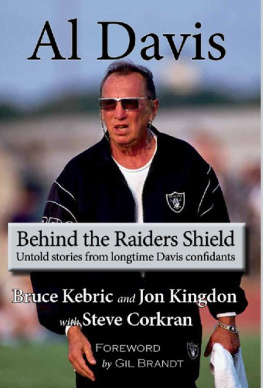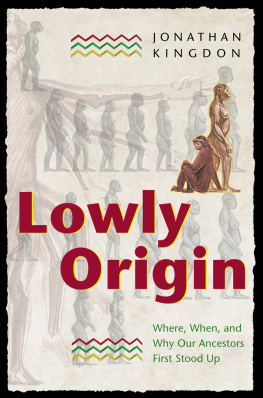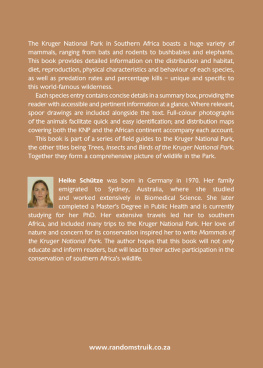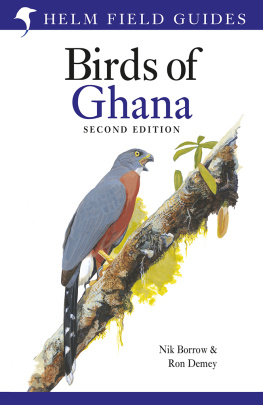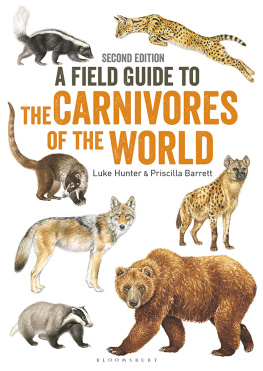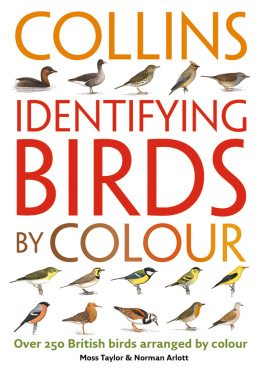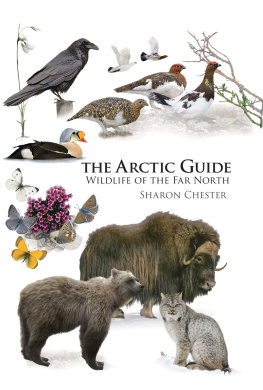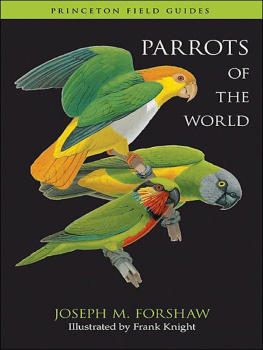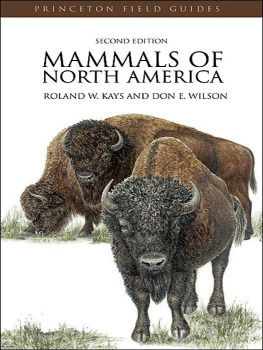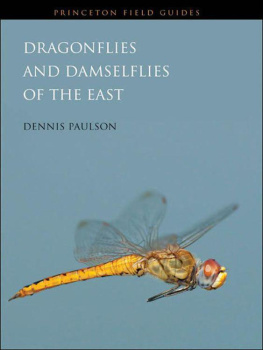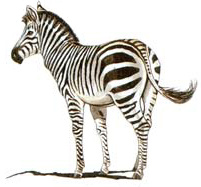
Published by Bloomsbury Publishing Plc,
50 Bedford Square, London WC1B 3DP
www.bloomsbury.com
First published by Academic Press 1997
Reprinted with corrections 2001
Reprinted by A&C Black 2003, 2007
Reprinted by Bloomsbury Publishing 2012
This electronic editon published in 2013 by Bloomsbury Publishing Plc
Copyright 1997 Jonathan Kingdon
Jonathan Kingdon has asserted his right under the Copyright, Design and Patents Act, 1988, to be identified as the author of this work.
eISBN: 978-1-4081-7481-4
Visit www.bloomsbury.com to find out more about our authors and their books. You will find extracts, author interviews, author events and you can sign up for newsletters to be the first to hear about our latest releases and special offers
A CIP catalogue record for this book is available from the British Library.
All rights reserved.
You may not copy, distribute, transmit, reproduce or otherwise make available this publication (or any part of it) in any form, or by any means (including without limitation electronic, digital, optical, mechanical, photocopying, printing, recording or otherwise), without the prior written permission of the publisher. Any person who does any unauthorised act in relation to this publication may be liable to criminal prosecution and civil claims for damages
This book is produced using paper that is made from wood grown in managed, sustainable forests. It is natural, renewable and recyclable. The logging and manufacturing processes conform to the environmental regulations of the country of origin.
CONTENTS
The motivation and impetus to prepare a guide to the mammals of a continent came from a mix of immediate and more distant influences. My parents and naturalists such as Bill MooreGilbert, Willoughby Lowe, Mtemi Senge Masembe and Fairfax Bell illuminated a nomadic youth in Tanganyika. This led on to a more disciplined interest in Natural History and a Darwinian outlook on life. Reg Moreau and Desmond VeseyFitzGerald were early influences while L.S.B. Leakey, Sir Julian Huxley, Peter Miller, Leonard Beadle and Alan Walker were among those who helped and provoked me into compiling an Evolutionary Atlas of African Mammals that was an essential precursor to this book. Indeed, since its publication there has been continuous pressure, from friends and publishers alike, to condense the text and enlarge the range of that work to embrace a continental scope.
A decisive influence on this project has come from my family, especially my sons. Zachary read, processed, discussed and helped refine the entire text while Rungwe pushed me into taking the first plunge. Elena has selflessly supported a lifetime of research on mammals.
I am indebted to many institutions for their support over the years, from Makerere University in Uganda and Oxford University in England to briefer or less formal associations with Kyoto University, Japan, CSIRO Australia, various museums both within and outside Africa, Wildlife Departments, National Parks and numerous Universities. I owe some independence of mind and movement to all those who have purchased my paintings, drawings, prints, sculptures and books.
The contents of this Guide are drawn from observations made in various parts of Africa, often in the company of friends and colleagues. They are also compiled from publications, correspondence and conversation with more people than can be acknowledged by name but some have had a more direct role. Morris Gosling, Colin Groves, David Pye, Simon Bearder, Alan Root, David Macdonald, Claudio Sillero, Patrick Duncan, Steve Gartlan, Mark Stanley Price, John Phillipson, Redmond OHanlon, Tom Butynski, Annie Gautier, Hilary Morland and John Fanshawe have kindly vetted structure, blocks of text or illustrations. Annie and JeanPierre Gautier, Tom Butynski, Steve Gartlan and many others, including John Skinner, Chris Hillman, Andrew Conroy, Gerard and Ahn Galat, Caroline Tutin, Tom Struhsaker, Lysa Leland, Robert Glen, Dick Estes and Keith Eltringham have hosted me in camps or homes in Africa. Their company, ideas and hospitality have contributed in more ways than can begin to be enumerated. Likewise Wildlife and National Park authorities in many African countries have helped with permits, hospitality, transport and guidance, assistance that has been vital in building up a broad overview as well as detailed documentation of the mammals. The Welcome Trust gave vital aid (196878).
Among the many sources of help and encouragement over the years the following are a far from adequate sample: P. Agland, I. Aggundey, T. E. Ahmed, K. Al-Khalili, P. Anadu, L. Ambrose, M. Anderson, P. Andrews, W.F.H. Ansell, A. Archer, E. Ayensu, E. Balson, W. Banage, W.W. Bishop, F. Bourliere, A. Brosset, E. Bunengo, J. Bushara, S. Cobb, M. Coe, S. Cole, G.B. Corbet, D. Cummings, M. Delaney, B.D. Dutrillaux, T. Fison, T. Flannery, G. Frame, U. Funaioli, A. Gentry, W. Gewalt, L. Goodwin, J. Goodall, P. Grubb, A. Guillet, A. Hamilton, D. Happold, M. Happold, G. Harrington, J. Harris, D.L. Harrison, R.W.H. Hayman, H. Heim de Balsac, R.S. Hoffmann, R. Hofmann, M.E. Holden, P. Honess, K. Howell, R. Hughes, R. Hutterer, E. Huxley, J. Itani, C.J. Jolly, D. Jones, J. Karmali, F.X. Katete, T.A. Kindy, H. Klingel, S. Kondo, K.F. Koopman, A. Koortland, H. Kruuk, J. Kundaeli, R. Laws, M. Leakey, R. Leakey, J.M. Lernould, J.M. Lock, B. LokaArga, L. Lokwang, A. MacKay, H.S. Mahinda, G. Maloba, G. Maloiy, R. Martin, A. Mongi, P. Morin, C. Moss, G. Musser, F. Mutere, G. Mutinda, E. Neal, J. Nel, H. Ngweno, G. Ntenga, E. Nyampunjo, J. Oates, J. ObondioOdur, W.K. Otim, I. Parker, R. Pellew, A. Pienaar, D. Pomeroy, S. Price, U. Rahm, G. Rathbun, A. Rogers, T. Rowell, S. Ruweza, J. SabaterPi, S. Sanford, R. Savage, G. Schaller, D.A. Schlitter, K. SchmidtNielsen, C. Sekintu, P. Shipman, R. Southwood, C. Spinage, P. Ssali, J. Ssenkebugye, C. Stuart, J. Sugiyama, A. Suzuki, T. Synnott, J. Thompson, E.O. Wilson, C. Thouless, N. Tinbergen, S. Tomkins, E. Vrba, S. Wainwright, R.J. Wheater, J. White, F. White, L. White, N. Winser, W.C. Wozencraft, R. Wrangham, S. Zuckerman.
My association with Academic Press, which dates back to 1966, has always been cordial and I thank Roger Farrand and Andy Richford for maintaining our long collaboration, also Maggie OHanlon and Shammima Cowan for their editorial talents.
Perhaps this short list of todays enthusiasts will give heart to tomorrows warriors who must carry on the fight to save Africas fauna and flora and the deeper realities of which they are the expression.
MAMMALIA |
PRIMATES | PRIMATES |
Old World monkeys and apes | Catarrhini |
Man and apes | Hominidae |
Chimpanzee | Pan troglodytes |
Bonobo or pygmy chimpanzee | Pan paniscus |
Gorilla | Gorilla gorilla |
Monkeys | Cercopithecoidea |
Colobid monkeys | Colobidae |
Olive colobus | Procolobus verus |
Red colobus | Piliocolobus |
Zanzibar red colobus | Piliocolobus kirkii |
Iringa red colobus | Piliocolobus gordonorum |
Tana River red colobus | Piliocolobus rufomitratus |
Next page

